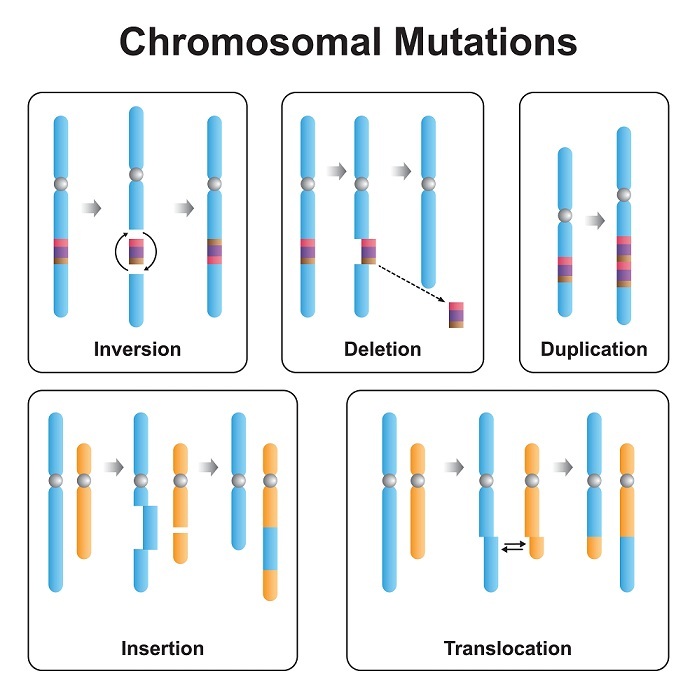
 Data Structure
Data Structure Networking
Networking RDBMS
RDBMS Operating System
Operating System Java
Java MS Excel
MS Excel iOS
iOS HTML
HTML CSS
CSS Android
Android Python
Python C Programming
C Programming C++
C++ C#
C# MongoDB
MongoDB MySQL
MySQL Javascript
Javascript PHP
PHP
- Selected Reading
- UPSC IAS Exams Notes
- Developer's Best Practices
- Questions and Answers
- Effective Resume Writing
- HR Interview Questions
- Computer Glossary
- Who is Who
Subfunctionalization - An overview
Introduction
Occasional inheritable mutation yields organisms that are suited for better survival in an ecological niche and progeny that are preferentially selected. This process of mutation and selection is the basis for the Darwinian evolution that led from the first cell to all modern organisms and explains the fundamental similarity of all living organisms.
The remarkable similarity of metabolic pathways and gene sequences across phyla argues strongly that all modern organisms are derived from a common evolutionary progenitor by a series of small changes, each of which conferred a selective advantage over others.
Evolution by Gene Duplication and Subfunctionalization
Sometimes due to mutations duplications takes place which leads to the introduction of a second copy of the whole gene into the chromosome due to defective replication. No deletion takes place in the second copy, and it is superfluous which leads to the evolution of new genes with new functions while retaining the original gene and its function. This whole process of evolution is known as evolution by gene duplication.
Once a gene is duplicated one of three things can happen to it ?

The duplicate gene produced does not have a new function, but it is preserved for evolution later, this process is known as subfunctionalization.
The duplicate gene acquires a new function whereas the original gene retains its old function, this process is known as neo-functionalization.
The duplication that is detrimental in nature is lost that causes neither the retention of old function nor the development of new function.
Subfunctionalization - An overview
During the process of gene duplication, the original remains as it is with the ancestral function, and a duplicate called paralog is produced which can have a different function from that of the original one.
In the case of sub-functionalization, no new function is attributed and hence no new adaptations are formed. But the new gene which is formed helps the ancestral gene to perform its function that is it sub-functions with the original gene. In such types of gene duplication division of labor can be seen.
Differences appear when one of the genes is silenced segmentally leading to the deletion of one of the functions, so only a duplicate gene is left with only one function out of the two. What should be noted is the fact that the original gene had the ability to perform both tasks but due to the loss of the original gene, the duplicate is left with only one function.
Examples of Subfunctionalization
One of the important examples of subfunctionalization is the formation of oxygen-carrying pigment or hemoglobin clusters in human beings. During the evolution of vertebrates, the gene encoding this protein has been duplicated several times by various means. Initially, the ancestral gene and duplicate gene performed the same function but during the course of changes, both genes diverged which were required for the normal function of the organism.
One more example of subfunctionalization is the process of evolution of tRNA endonucleases of Archaea. It has been found that the genome of crenarchaeote Sulfolobus solfataricus contains two paralogs of the tRNA endonuclease gene of Methanocladococcus jannaschii.
Models That Explain Subfunctionalization
Model Explaining Functional Divergence
Earlier it was thought that a gene can perform only one function but later it was established that a gene can, allelic forms of genes can share different functions. This led to the hypothesis that neutral mutations that lead to the formation of a duplicate gene that shares the function of an ancestral gene give a more accurate description of the retention of duplicate genes, unlike neo-functionalization.
Specialization Model
This model explains the specialty that is acquired by the duplicate gene under given conditions. It means that if the ancestral gene produces a protein at every stage of development or under every environmental condition duplicate gene will express itself under special developmental stages or environmental conditions. This specialization produced will have a positive impact rather than a neutral one.
Model of Gene Sharing
This model does not consider gene duplication an important factor for acquiring new functions instead there is an addition of functionality to the existing gene.
Complementation Model
This model states that when gene duplication occurs paralogs together perform the ancestral function in other words, they complement each other for a single function and loss of any gene will have a deleterious impact on the ancestral function.
Significance of Subfunctionalization
Subfunctionalization helps drift and selection to act upon by providing new genetic material which can give rise to new function which can appear in later stages of evolution.
It can help in preservation of duplicate gene copy which include the neo functionalized gene copies.
Several new genes with novel functions have evolved through the process of sub functionalization. In other words, it imparts genetic novelty to the organisms.
Conclusion
Subfunctionalization has a deeper impact on the preservation of copied genes and the functions associated with it. It is the most accepted process to explain the divergent evolution of organisms as it provides the mutation which is required for drift and selection to act upon.
Duplicate genes that are formed as a result of sub-functionalization have differentiated with respect to expression pattern and any modification in this pattern can result in alteration of modification elements.

